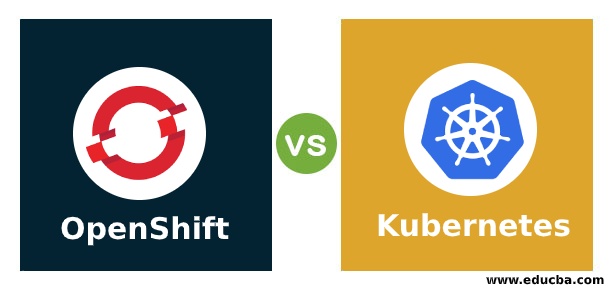Updated May 23, 2023
Difference Between OpenShift vs Kubernetes
The following article provides an outline for OpenShift vs Kubernetes. OpenShift is containerization software that is used to manage and orchestrate Docker containers on systems such as Kubernetes. It was created in 2011 by Red Hat and is built with the Go and AngularJS programming languages. OpenShift is meant to run exclusively on Linux computers and does not require the use of a virtual machine.
Head to Head Comparison Between OpenShift vs Kubernetes (Infographics)
Below are the top 10 differences between OpenShift and Kubernetes:
Key Difference Between OpenShift vs Kubernetes
Let us discuss some of the major key differences between OpenShift and Kubernetes:
- OpenShift is a product, and Kubernetes is a project. Support is given to the users who install OpenShift in application deployment and maintenance. Users can also select the features of the product. Kubernetes is a framework with different products, a complete project, and the entire platform. A community in Kubernetes solves the users’ problems.
- Flexibility is very much offered in Kubernetes due to the templates, and it is far better than OpenShift. In Kubernetes, the Helm chart is used for high flexibility. Templates are used in OpenShift so that flexibility is less.
- OpenShift is more secure than Kubernetes. Container images or other official images cannot be run on OpenShift. Simple applications cannot be run on OpenShift due to security issues. A minimum security level is only needed in Kubernetes. Simple apps, though they could be run on Kubernetes, cannot be done so due to OpenShift.
- Authorization is done in both applications differently through Role-Based Access Control is carried out in both applications. Authorization is done in container specifications at Kubernetes. OpenShift’s authorization is done through a separate security context constraint. This makes OpenShift to be more secure than that Kubernetes.
- OpenShift uses deployment configuration to deploy the projects or applications run in the system. This allows for updating the pods in the system.
- It is important to note that a deployment configuration cannot be installed through controllers. When compared to Kubernetes, OpenShift configuration is thought to be more effective. The configuration is set up using well-managed dedicated pods, giving customers convenient management capabilities. In OpenShift, external access is offered via routers, which have less functionalities than Ingress. Ingress is used with several servers in Kubernetes and provides more flexibility.
OpenShift vs Kubernetes Comparison Table
Let’s discuss the top comparison between OpenShift and Kubernetes:
| OpenShift | Kubernetes |
| In order to manage the container images, this uses ImageStreams so that tags of the images can be changed easily. This also makes the users upload images and tags easily. | There are no specific privileges in Kubernetes to upload images, hence container image management is inadequate when compared to OpenShift. |
| External tools are not needed, and the application provides clusters to the users for easy logging and checking of the images. | Users must utilise external tools to log in and use the containers, making the application less user-friendly. |
| Changing from projects to a namespace or vice versa is done easily. Fewer commands are used to upload the images in different environments. | It is difficult to transition from projects to namespaces or vice versa. More commands are required to upload photos in various contexts. |
| Jenkins is integrated with the application for CI/CD application, and this synchronization makes the user to work with the software faster. | Jenkins is not integrated with Kubernetes, and users take time to synchronize and upload images in the system. |
| Plugins are revealed in the networking application, and this makes the system more trustworthy for networking problems. | Kubernetes handles networking with the help of plugins that are not visible to users. This makes the user to find the faults if they happen in the application. |
| Service catalogs with service brokers are provided so that users are comfortable with clusters and managed services. This is better for users than Kubernetes. | A service catalog is not provided easily and needs separate installation in the system. And also, fewer provisions are provided for clusters than services. |
| The subscription must be renewed in between, and as the cluster grows, the money to be paid will be more. This makes the application costly. | There is no subscription for Kubernetes, and it works on the distribution and community support of many users. This can be self-supported without OpenShift. |
| Many built-in features are provided in the application, and users find it easy to work with the application in the system. | The user has to install many features, which makes the system deal with networking and images. Users find it more complex than OpenShift. |
| Only RedHat Enterprise Linux is to be used to install OpenShift. CentOS can also be used for the installation. | Kubernetes may be installed on any Linux distribution without causing any issues with the application. |
| OpenShift can be used in the cloud with its new release and its updated flexibility. | Kubernetes can be easily installed on many platforms and is more standard than the OpenShift application. |
Conclusion
There are many common patterns in both the applications and the proper working of both is needed for a successful project. Integration and working are better in OpenShift, but Kubernetes provides the platform for the application. OpenShift is more demanding by the users due to these aspects.
Recommended Articles
We hope that this EDUCBA information on “OpenShift vs Kubernetes” was beneficial to you. You can view EDUCBA’s recommended articles for more information.




